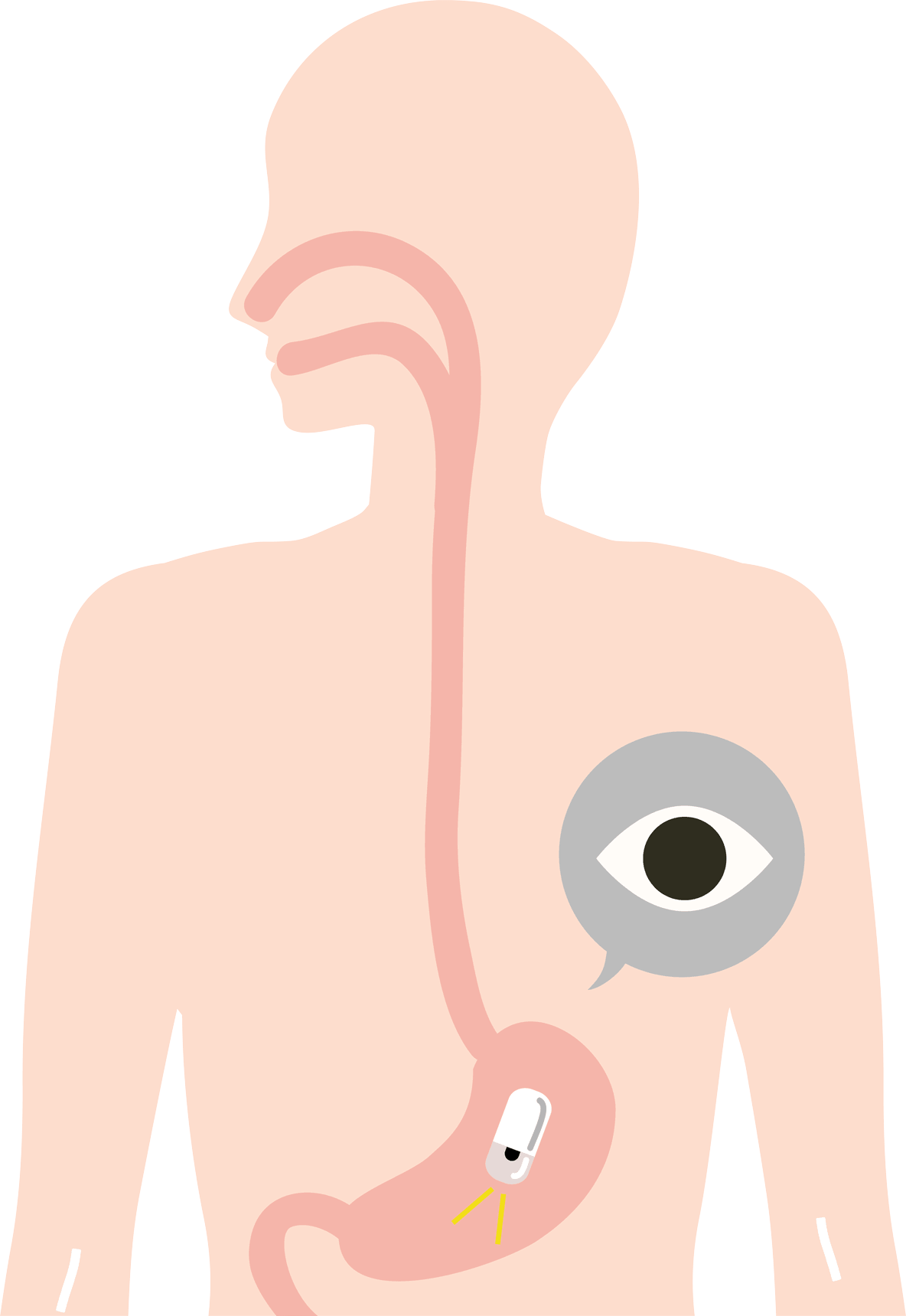procedures
Capsule Endoscopy
What you should know about capsule endoscopy
What is a Capsule Endoscopy?

Capsule endoscopy, commonly known as “pillcam”, is a outpatient diagnostic test that allows the doctor to examine the entire small bowel. Your small bowel is made up of three parts, duodenum, jejunum, and ileum. During a typical endoscopy the initial part of the duodenum is evaluated. During a colonoscopy a small portion of the ileum is evaluated. This leaves a large portion of the small bowel in between unexamined. A pillcam is the size of a large vitamin. The pillcam contains a battery and camera that is swallowed or endoscopically placed and takes many images of the digestive tract as it travels through the patient’s body. These images are recorded by a device the patient wears on a waist belt which is later downloaded and read by your doctor.
Please note that this procedure is only done in the office and not in the hospital.
Why is a capsule endoscopy done?
This procedure helps your doctor evaluate the small bowel when typical endoscopic procedures fail to diagnose the cause of recurrent/persistent symptoms like abdominal pain, diarrhea, anemia or bleeding. Capsule endoscopy facilitates your physician to evaluate those symptoms.
What preparations are required?
It is very important to stop eating and drinking at the times noted in your instructions. Please pay close attention to these instructions to avoid delaying or cancelling your procedure. Tell your doctor in advance about any medications you take since you might need to adjust your usual dose for the examination. Discuss any allergies to medications as well as medical conditions such as heart or lung disease.
What happens during a capsule endoscopy?

The morning of the procedure you cannot eat or drink and arrive at your appointment with loose clothing to allow for the sensors to be placed easily. The sensors will be applied over your abdomen and connected to the data recorder. A belt will be placed around your waist. Then you will swallow the pillcam with a cup of water. Sometimes due to the inability to swallow or other medical problems, like gastroparesis, the capsule will be required to be placed endoscopically.
The procedure lasts between eight (8) and twelve (12) hours and you can leave the physician’s office during this time. Typically the data recorder is returned the following day where the device is downloaded to an office computer and reviewed by your doctor. The pillcam itself will pass in your bowels and flushed down the toilet.
During the procedure recording time you will have instructions which you should carefully review as you can start drinking clear liquids 2 hours after you ingest the pillcam. After fours from initially ingestion of pillcam you can have a general liquid diet and after the procedure you can return to a normal diet.
What are possible complications?
Although complications are rare, they are possible. Most tests go without problems but the risk of this procedure is retention of the capsule. This is where the pillcam gets stuck in the small bowel either due to a stricture or obstruction. Early signs of this complication are fever, abdominal pain, nausea or constipation. In any case you should call your doctor immediately for instructions. Sometimes the pillcam can be retrieved endoscopically or may require surgery to retrieve.